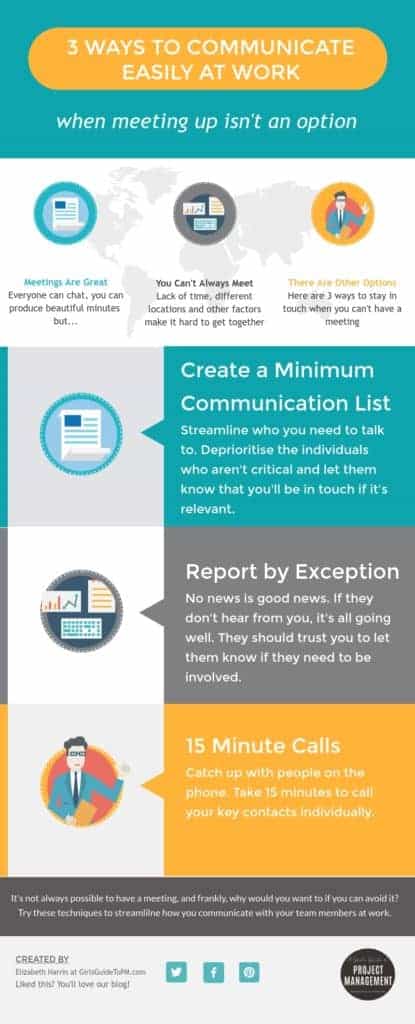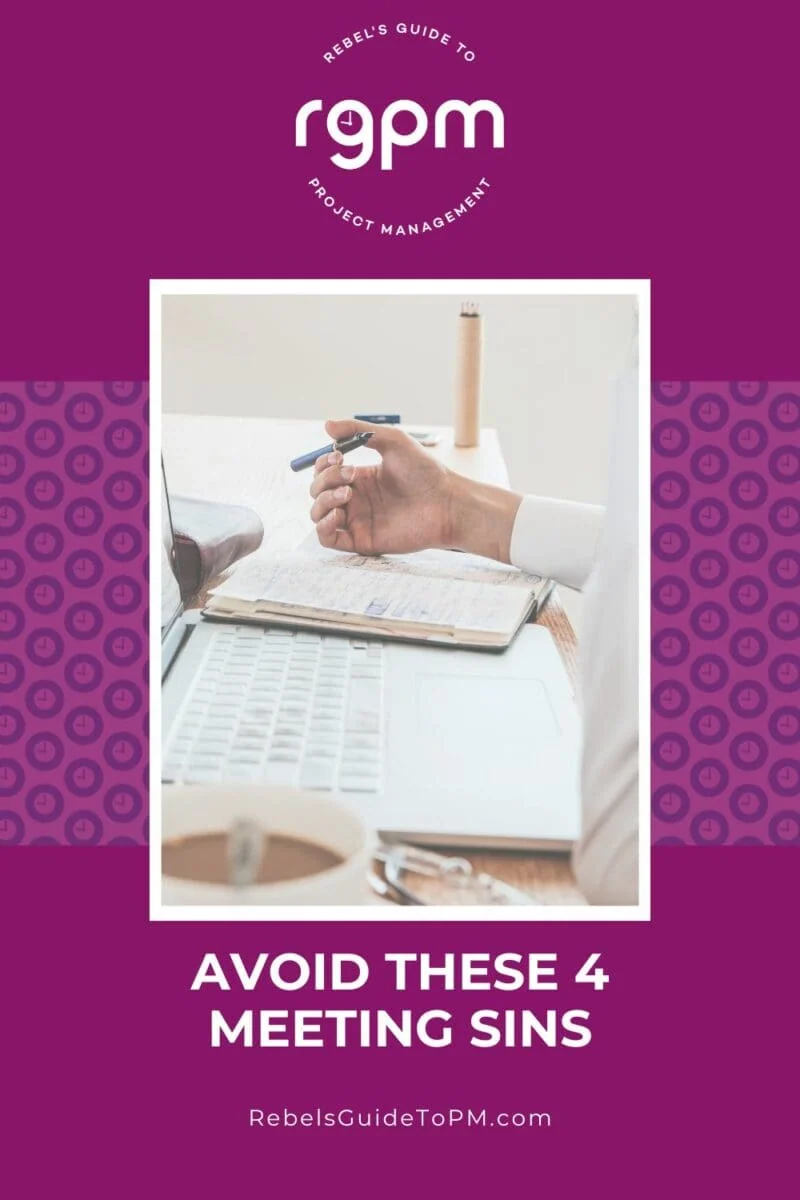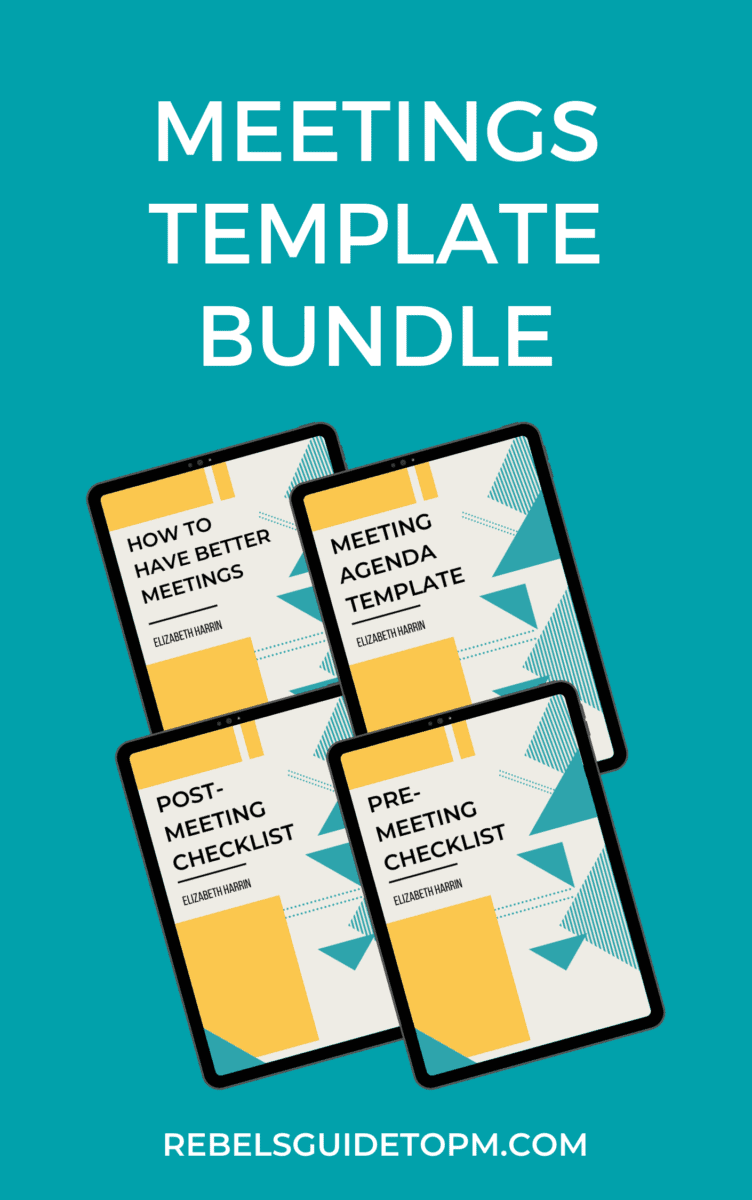How To Avoid The 4 Sins of Meetings
This blog is reader-supported. When you purchase something through an affiliate link on this site, I may earn some coffee money. Thanks! Learn more.
Have you ever been in a meeting where one person dominated the conversation?
I have.
The person I’m thinking of was a senior manager. Very well respected and a lovely guy. But he hadn’t done a hands-on frontline job with customers for quite some time.
The meeting was to discuss processes. The people who did the processes were there. But they didn’t contribute as much as I thought they should.
I’ll never know why that happened but I can’t help thinking that having a senior, charismatic and talkative person in the room who enjoyed solving problems might have been part of it.
Maybe he did know more about the process than I gave him credit for. Maybe the others had nothing to add.
I’ll never know if we would have come to different – better? – conclusions if the less vocal people in the room had spoken up more.
Remembering Meetings for the Right Reasons
In his book, Shine: Communicate Your Way to a Brighter Career, Gerry Lewis talks about how to make your meetings memorable for the right reasons.
Meetings are a key opportunity at work to stand out and make your mark. And there are plenty of meetings in project management.
Whether you are in the chair or attending as a subject matter expert, whether you are taking notes, hitting the buttons on the meeting transcription software and keeping time or just there to observe, you are on show in a meeting.
And depending on who else is in the room (virtually or in person), that might influence how you feel about taking part.
Disengagement is one of the 4 sins of meetings that Lewis discusses in the book. The others are wastefulness, lateness and disorderly conduct. Let’s look at them all now.
Sin #1: Disengagement
Lewis talks mainly about engaging with facilitation techniques as a meeting chair. He talks about putting creative toys on the table, getting people to move around and discusses good conference call practice.
Avoid by: Think about what it is like to be a participant in one of your meetings. Is it fun? Do people enjoy coming along or do they roll their eyes when you put another Project Steering Group meeting in the diary?
I think office culture comes into play here too. Creative toys on the table would never have worked with some of the project teams I have led. I’d have been laughed at, and not in an “engaged” way.
So tune your engagement activities to suit the organization and if in doubt, bring cake (plus a gluten free option).

Sin #2: Wastefulness
This is where you spend too much time in meetings talking about nothing. It’s wastefulness relating to time.
It happens when a meeting is a standing point on the calendar. You can put in regular project team meetings but you don’t have to have them if there is nothing to talk about that can’t be done in another, more productive, way.
Avoid by: Decide if you really need a meeting at all. If you can achieve the same objective without a meeting, then cancel it.

Sin #3: Disorderly Conduct
“People can easily be distracted at meetings,” Lewis writes. He goes on:
“Keep in mind you don’t know what’s in their heads when they walk in. Have they come from an intense meeting where they had to present, or have they just finished a difficult call with a colleague or client? Are they preoccupied with something they are working on and consider your meeting an interruption to their day? Everyone is entitled to have things going on in their heads. We all do. So the sooner you are clear on exactly what you want from participants at the meeting, the more efficient and effective you will become.”
Lewis points to having a meeting agenda (don’t have one? Get a set of meeting templates here) as one of the easiest and best ways to avoid distractions during a meeting.
Avoid by: As well as having an agenda, you need to stay on time within the meeting. Appoint a time keeper if you are going to struggle to manage that as well as chairing the meeting and taking minutes – you’re only human, after all.
Sin #4: Lateness
Timekeeping in general is another issue that Lewis considers a meeting sin. He proposes that you build a reputation for being on time and starting on time.
Avoid by: Just start your meeting, regardless of whether all the people are there or not. You can work on bits of the agenda that don’t need them while you wait for people critical to other agenda points.
I do this often, mainly because if we don’t start, we don’t finish on time either and I don’t like things to drag on. You can nearly always get through the review of actions from the last meeting without all the people in the room (although it’s better to have followed up with people before the meeting so you don’t have to use precious time on the day for everyone to update you).
Equally, you can ask for additional Any Other Business points from the participants and note them for later. Then jump around the agenda until you’re really stuck.
Meanwhile, Skype or text their PA and find out where they are and their expected arrival time (not to stereotype or anything, but the ones who aren’t on time are often the ones who have PAs).
Meetings are a necessary evil on projects and the more you can do to help everyone get the most out of their meeting time, the better.
Avoid these 4 areas of discontent and you’ll be well on the way for being remembered for chairing meetings that are efficient, effective and help get things done.

